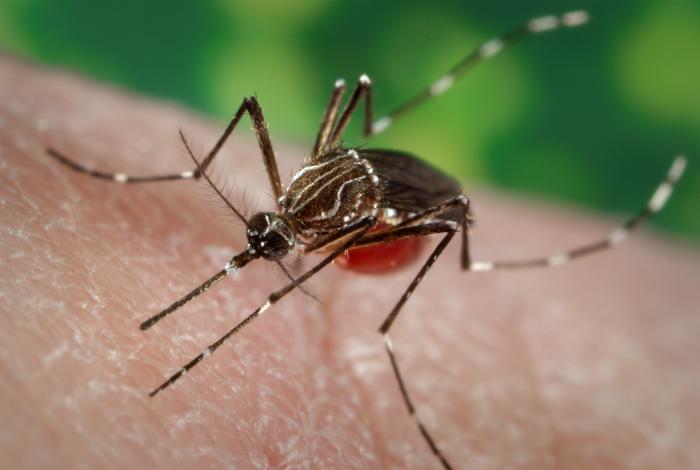Zika: What States Can Expect in the Coming Months

Despite the half-dozen people who have caught the Zika virus from mosquitoes in Florida, experts say that it's unlikely Zika will begin to spread locally in many other places in the U.S.
That's because the mosquitoes that can carry Zika cannot breed in most parts of the U.S. during the winter. And although the mosquitoes can breed in a few warmer locations within the country, they generally don't travel very far, research shows.
Cases of local transmission of Zika may trigger fears about the virus, but rapid spread of the virus by mosquitoes is just not a likely scenario, said Joseph Eisenberg, chair and professor of epidemiology at the School of Public Health at the University Michigan. "The concern about Aedes aegypti spreading into other states is at the timescale of climate change. Not next month," Eisenberg told Live Science.
The Centers for Disease Control and Prevention (CDC) reports there have now been six cases of Zika that were locally acquired in Florida, meaning that people caught the virus from mosquitoes that bit them there, as opposed to catching the virus from a bite while they were in another country. This transmission is likely confined to a one-square-mile area north of downtown Miami, the CDC said.
The other 1,956 reported Zika cases in the U.S. so far were all "travel-related" cases, meaning that they occurred in people who either traveled to other countries where Zika is active, or who caught the virus from sexual activity with a person who had traveled. So far, the CDC says there have been 16 cases of infants born with birth defects that are possibly linked to Zika. [5 Things to Know About the Zika Virus]
Aedes aegypti and Aedes albopictus, the main two mosquito species that spread Zika, are both found in the United States. The CDC estimates that in 2016, at least one of the two mosquito species will be present in all but nine states.
But these mosquitoes generally don't travel very far. According to the World Health Organization, the average A. aegypti travels only about 0.2 miles (400 meters).
Sign up for the Live Science daily newsletter now
Get the world’s most fascinating discoveries delivered straight to your inbox.
In addition to being vectors for Zika, both of these mosquitoes can infect people with the viruses that cause dengue fever, chikungunya and yellow fever.
Eisenberg said that paying attention to past outbreaks of locally transmitted dengue, rather than the mere presence of these mosquitoes, can give researchers a better guess as to the areas most vulnerable to local transmission of Zika.
In the last decade, Texas, Florida, and Hawaii have all experienced local spread of dengue. In the most recent large outbreak, which took place from September 2015 to March 2016, the Hawaii Department of Health reported 238 confirmed dengue cases. Officials said this cluster of infections was imported by an infected traveler, and that dengue is not endemic to Hawaii.
A. aegypti is noted for its ability to thrive in cities and spread disease. These mosquitoes often live in homes and bite during the day, Eisenberg said. A. albopictus doesn't generally live as closely to humans but can survive in a wider range of temperatures than A. aegypti. Both species can breed using very small amounts of standing water, he said. "They can even [breed in] plants that hold water in the leaves, like succulents."
Breeding season for the mosquitoes varies by state, and is often dependent on weather. According to a 2016 study published in the journal PLOS Currents Outbreaks, most states in the U.S. are unsuitable for A. aegypti during the winter months, with the exception of southern Florida and southern Texas, due to the warmer weather.
During the summer, weather is suitable for A. aegypti breedingin all 50 states, but the southern areas of Texas and Florida are still the regions that are most susceptible to experiencing local spread of the viruses these mosquitoes carry, due to not only their weather but also their higher likelihood of having travel-related infections, the study found. Impoverished areas at the U.S.-Mexico border may also be at greater risk because homes there are less likely to have amenities that prevent mosquito bites, such as air conditioning and window screens.
But even people who live in areas where Zika is unlikely to show up any time soon should try to prevent mosquito bites, experts say. Getting rid of standing water is an important step, and includes clearing rain gutters, emptying (and, if desired, refilling) birdbaths, and dumping out containers that can hold water, such as flower pots, buckets and rain barrels, once a week. Swimming pool water should also be kept treated and circulating to prevent mosquitoes. [Can Pregnant Women Safely Use Mosquito Repellants?]
People can also prevent being bitten through the use of netting, mosquito repellants and wearing long pants and long-sleeve shirts. Fans are another great way to ward off mosquitoes, as they are relatively poor flyers, often hampered by moving air.
In most cases of people who do get Zika, the infection is often mild or goes unnoticed. In rare cases, Zika can cause the autoimmune disorder Guillain-Barré syndrome, which can cause muscle weakness and even temporary paralysis.
But pregnant women and their partners face a different risk: Zika can lead to microcephaly and other severe health problems in infants. Researchers are studying how often the infection in pregnant women may lead to these problems in infants.
Original article on Live Science.









